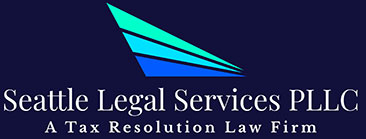One of the best things about working as an independent contractor is the freedom and flexibility it can provide. Yet these benefits come with additional responsibilities, including filing annual tax returns and making quarterly estimated tax payments. If you don’t file returns or pay taxes, the IRS will find out, and then they may assess taxes and penalties against you.
But how does the IRS know that you’ve earned self-employment income? Because your clients or other payers use Form 1099 to report your payments to the IRS. If the IRS doesn’t see the income from these forms on your individual tax return, they will send you notices about your unfiled 1099 taxes. And at some point, they may even file a return to assess taxes against you – that can lead to an unnecessarily high tax liability, which is a headache to deal with.
The goal of this blog post is to discuss what to expect in these situations and what you can do if you find yourself with unfiled tax returns and/or unpaid 1099 taxes. To find out more about how to deal with back taxes as a self-employed individual, you can reach us using our online contact form or by calling 425-428-5262.
Key Takeaways
- 1099-NEC forms alert the IRS that you have self-employment income.
- The IRS will send you non-filer notices if you don’t file.
- If you ignore the notices, the IRS may file a substitute for return (SFR) on your behalf.
- SFRs don’t give you any business deductions, leading to high tax liabilities.
- If you receive a non-filing notice from the IRS, either file a return or explain why you don’t need to file.
What Is IRS Form 1099?
The 1099 form is used to report various types of non-wage income to the IRS. There are several different versions of this form depending on the type of income received. Small business owners, contractors, and freelancers most commonly receive the following types of 1099 forms:
- 1099-NEC – refers to non-employee compensation (NEC) or funds you earned as a freelancer. For example, if you provide janitorial services or graphic design on a freelance basis to a business, they’ll generate a 1099-NEC to show your payments.
- 1099-Misc – may report payments from royalties or broker payments, direct sales of goods, rent, prizes, and awards. For example, if you sell books on Amazon, you may receive a 1099-Misc. In the past, businesses generated 1099-Misc forms for contractors, but they have been replaced with 1099-NECs.
- 1099-K – reports payments from third-party network transactions. For example, if you receive over a certain threshold of payments through a service such as PayPal or Venmo, you may receive this form. Similarly, if you process credit card payments using something like Square or Clover, you’ll also receive this form.
These forms show the IRS that you received self-employment income. They don’t include any details except how much you were paid and who paid you.
Note that as a freelancer or business owner, you’re legally required to report all of your income. Even if it’s not reported on a 1099, it must still be reported on your income tax return. The IRS has various ways to catch unreported income through audits, and if the decision not to report this income was deliberate, you may potentially face criminal and/or civil charges for tax evasion or tax fraud.
There are also 1099 forms that you may receive, whether or not you’re a contractor, including 1099-INT (interest payments), 1099-B (reports from investment accounts/brokerages), 1099-R (certain types of retirement payments), 1099-G (certain government payments, such as state tax refunds).
What Happens If You Don’t File Tax Returns as a 1099 Contractor
If you don’t file your tax returns to report 1099 income to the IRS, a lot can potentially happen. As mentioned previously, being accused of civil tax fraud or criminal tax evasion is a possibility. Yet this is unlikely to occur unless the IRS has clear evidence that you intentionally ignored this tax obligation.
What’s more likely is that the IRS will let you know that you didn’t file a tax return despite the IRS receiving one or more 1099 filings attributed to you. What the IRS typically does when this happens is send you several notices that point out your missing tax returns and give you the chance to file them or explain why you don’t have to. Here are some of the notices you might expect:
- CP59
- CP515
- CP516
- CP518
- CP2566
- CP80
- CP63
- CP259
Assuming you don’t properly respond to these notices, more drastic actions are possible, the most notable being the IRS filing a tax return for you with a substitute for return (SFR). This might seem like the IRS is doing you a favor, but it’s actually a bad thing.
Once the IRS knows how much you owe, they will back date penalties on your account to the original due date. The failure to file penalty is 5% of the unreported tax per month, up to 25%. For instance, say the IRS generates an SFR showing that you owe $20,000. Then, the non-filing penalties are $1000 per month, up to $5000. Failure-to-pay penalties also stack on top of these amounts.
Why You Don’t Want the IRS To File a Substitute for Return
The short answer is that the SFR will almost always result in you owing taxes when you’re entitled to a refund or owing more money than you would if you filed the return yourself. Either situation could arise because the IRS won’t apply all of the tax credits or deductions you’re eligible to receive.
For example, say that you received several 1099-NECs showing a total of $100,000 in income. If the IRS generates an SFR, it’ll show $100,000 in self-employment income. That will be subject to self-employment tax at a rate of 15.3% which equates to $15,300. Then, you’ll owe income tax on top of that amount.
In contrast, if you file the return on your own, you’ll report $100,000 in business revenue, but then you’ll be able to claim your business expenses. In this case, say you pay: $24,000 in office rent, $1000 in software and subscription costs, and $10,000 in subcontractor labor. That brings your business profit down to $65,000. The self-employment tax on that amount is $9,945. Plus, you’ll owe income tax, but on a much lesser amount. Also, since you’re filing your own return, you can ensure that you report your dependents correctly and claim any tax credits you might be entitled to. The SFR doesn’t account for any of that.
What to Do If You Receive an SFR
After you receive the notice about the SFR, the IRS will inform you about your tax bill with a notice of deficiency. You have 90 days to respond in one of three ways:
- Pay the assessed tax.
- File the missing tax return (and then make payment arrangements on the tax due).
- Explain to the IRS why you’re not required to file a tax return.
If you don’t do any of these things, you can expect the IRS to begin the delinquent tax collection process based on the amount due shown on the SFR.
IRS Collection Actions
If your unfiled tax return problems go unresolved for long enough, the IRS will attempt to collect the tax it believes you owe. This could mean having your tax case assigned to a revenue officer, the IRS filing a tax lien encumbering your property, and/or the IRS seizing your assets with a tax levy.
The irony here is that the IRS may be trying to collect a tax debt you don’t owe. Or if you do owe the IRS money, the actual amount is far less than what the IRS has assessed against you. But in either situation, you need to proactively reach out to the IRS to show them they’re wrong.
What You Can Do If You Have Unfiled Tax Returns
If the IRS has contacted you about one or more unfiled tax returns, the burden is on you to either file the missing return(s) or show the IRS why you aren’t required to file. If you suspect the IRS is relying on erroneous income information, the first thing you probably want to do is request your IRS tax transcripts. These will provide you with access to your tax records and give you a glimpse at the information the IRS has that makes it think you owe them money.
File Accurate Tax Returns
Assuming you’re required to file a tax return, you should do so as soon as possible, even if it will be late or result in you owing the IRS back taxes. This is because the sooner you file the missing tax return, the sooner you can stop the accruing of failure-to-file penalties and prevent IRS collection enforcement actions against you.
If you know you can’t afford to pay the entire tax amount after you file the missing return (or you disagree with the debt itself), you have several possible options:
- Submitting an offer in compromise.
- Setting up a payment plan or installment agreement.
- Applying for currently not collectible (CNC) Status.
- Filing an appeal.
- Requesting penalty abatement.
Some of these avenues can give you more time to pay your taxes and even reduce the amount you owe. However, you can’t take advantage of them unless you respond to the IRS and get caught up with your missing tax returns. Depending on the amount you owe and the complexity of your situation, you might want to first consult with a tax professional.
A Tax Professional Can Help With Unfiled 1099 Tax Returns
By the time the IRS informs you that you’ve failed to report 1099 income on your tax returns, you’re likely facing some hefty penalties and interest charges. If you wait until the IRS files a tax return for you with an SFR, you should expect an even bigger tax headache and larger tax bill to either pay or dispute.
All of this to say, the sooner you file your missing tax returns, the easier it will be to fix this tax mess and save money. To schedule a consultation to discuss what this process entails, contact Seattle Legal Services, PLLC either online or by calling 425-428-5262.
Unfiled Tax Returns as a 1099 Worker FAQs
What is a substitute for return for 1099 income?
The IRS receives income information from payers through various documents, such as W-2s and 1099s. So even if you weren’t an employee and sent nothing to the IRS, the IRS has enough information to prepare and file a tax return on your behalf if you don’t file one yourself. This is called the substitute for return, or SFR.
Do I still need to file an old tax return if the IRS already filed one for me with an SFR?
You don’t have to. You can agree with the SFR as filed. However, if you believe that you owe less, you should strongly consider filing your own tax return.
Do I still need to file a tax return if I made quarterly estimated tax payments?
Yes, you must file a tax return if you have over $400 in self-employment income or earned any type of income that’s over the standard deduction for your filing status.
What are the penalties for unfiled returns?
For individuals and most businesses, the failure-to-file penalty is 5% of the taxes owed for each month they go unpaid, up to a maximum of 25%.
How far back do I need to go when filing unfiled tax returns?
It depends on your situation, but in most situations, the furthest you’re likely to need to go back is six years because of the six-year compliance rule.
Sources
– https://www.irs.gov/payments/failure-to-file-penalty
– https://www.irs.gov/irm/part5/irm_05-001-011r
– https://www.irs.gov/businesses/small-businesses-self-employed/notices-for-past-due-tax-returns

